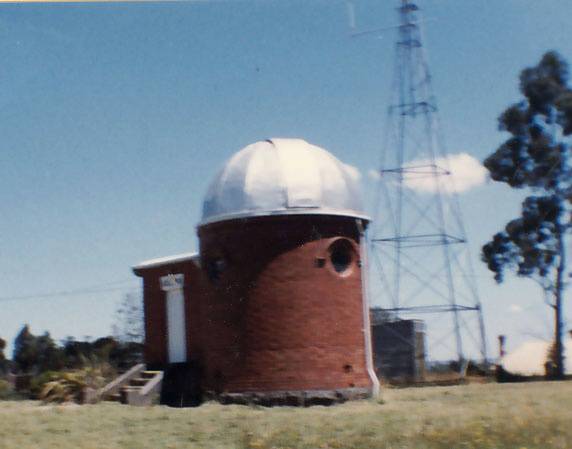| Back to search results » | Back to search page » |
|
Former James Oddie Observatory
Other NamesBallarat Municipal Observatory , Ballarat School of Mines Observatory LocationCnr Magpie & Cobden Street,, BALLARAT CENTRAL VIC 3350 - Property No B5629
File NumberB5629LevelState |
|
Statement of Significance
The Ballarat Municipal Observatory is perhaps the only surviving nineteenth century private observatory in Victoria. Scientifically, it is important for its instruments, several of which were built on site by Henry Evans Baker, including the 26 inch reflector telescope in 1888, which was the first large telescope built in Australia. Some of the observatory's other equipment was donated to the Commonwealth observatory where it made an important contribution in the founding of Mt Stromlo. An amateur, community based institution, Ballarat observatory has played a leading role in promoting general education in astronomy for over one hunderd years. It was the first municipal observatory in Australia.
The observatory is a legacy of the role of amateurs in nineteenth century science, and also of the contemporary popular interest in astronomy. In addition, the observatory provides particular evidence of the wealth, the engineering and artistic skills, and the civic ideals which have accumulated in Ballarat since the discovery of gold.
The many stained glass windows , most made locally, are a feature of the observatory. They constitute an exceptional collection of cosmic, religious and scientific symbolism which portray some contemporary understandings of astronomy. They also indicate the number of community groups which supported the observatory in the early twentieth century, and express the importance of local philanthropy and community support in the observatory's establishment and survival.
The Classification incorporates all the buildings and works on the site, including the Baker built 12 1/2 inch, 5 inch and 26 inch telescopes, the Jelbart domed observatory and telescope, the sliding roof of the Baker Hall, the radio telescope building, and the stained glass and other internal decoration of the buildings.
Classified: 24/10/1988
Group
Science
Category
Observatory




